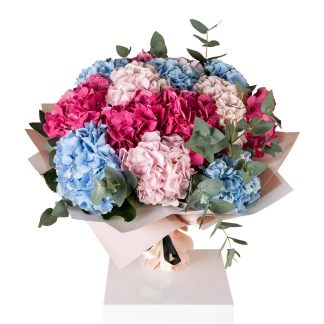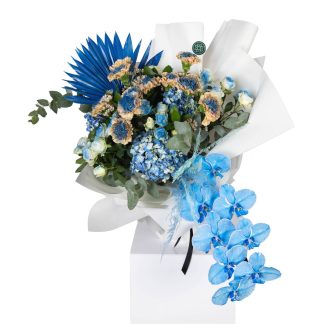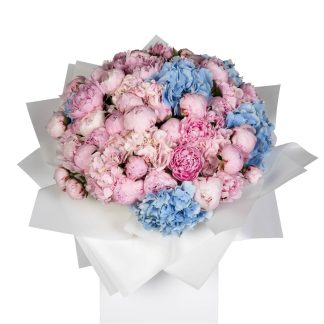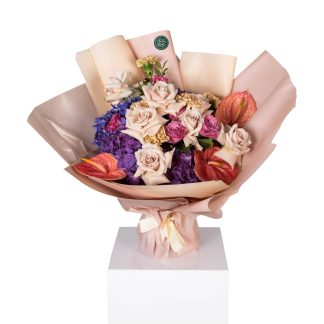Hydrangeas Flowers
Embark on a captivating journey into the realm of Hydrangea, the bewitching beauty known by the enchanting moniker of “hortensia.” Within this genus of flowering marvels, a tapestry of more than 75 species awaits, their origins stretching across the vast landscapes of Asia and the Americas. But it is in the mystic realms of eastern Asia, where China, Korea, and Japan unveil their secrets, that the true spectacle of Hydrangea’s species diversity comes to life.
As you delve into the world of Hydrangea, prepare to be immersed in a botanical wonderland. Each species bears its own unique charm, with delicate blooms and intricately shaped leaves that captivate the eye and stir the imagination. From the elegant grandeur of the lacecap hydrangeas to the dramatic allure of the mophead varieties, a symphony of colors, forms, and textures unfolds before you.
Picture the rolling hills of China, where Hydrangea reigns supreme, displaying a vibrant palette that paints the landscapes with ethereal shades of pink, blue, and purple. Traverse the ancient paths of Korea, where Hydrangea’s delicate blooms dance in harmony with the gentle breeze, casting a spell of serenity upon the land. And wander through the mystical gardens of Japan, where Hydrangea adorns the scenery like a living tapestry, bestowing its beauty upon all who behold it.
In this wondrous world, Hydrangea stands as a testament to the immense diversity and resilience of nature. Its captivating presence adds a touch of enchantment to gardens, parks, and landscapes, captivating the hearts of all who witness its floral splendor.
So, embrace the allure of Hydrangea, as its rich heritage and diverse species beckon you into a realm where beauty knows no bounds. Let the mystique of eastern Asia guide your path as you uncover the secrets of this botanical treasure. And as you immerse yourself in the captivating tales woven within the Hydrangea’s petals, allow yourself to be captivated by its spell, for within this genus lies a world of wonder waiting to be discovered.
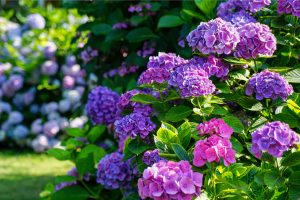
Hydrangeas flowers FAQ
Hydrangeas flowers meaning?
Where to buy Hydrangeas?
How to take care of Hydrangeas?
- Light and Location
Hydrangeas thrive in morning sun and afternoon shade. Choose a location with bright, filtered light.
Avoid exposing hydrangeas to direct sunlight for extended periods, as it can scorch the leaves and flowers. - Watering
Keep the soil consistently moist but not waterlogged. Hydrangeas prefer regular watering, especially during hot and dry periods.
Water deeply at the base of the plant to ensure the roots receive adequate moisture.
Mulching around the base of the plant helps retain moisture and regulate soil temperature. - Soil and Fertilization
Hydrangeas prefer well-draining soil that is rich in organic matter. Amend the soil with compost before planting.
Fertilize hydrangeas in early spring and again in late summer with a balanced slow-release fertilizer formulated for flowering shrubs.
Follow the instructions on the fertilizer packaging to determine the appropriate amount and application method. - Pruning
Prune hydrangeas after they have finished flowering. Remove spent blooms by cutting the stem just above the first set of healthy leaves.
For mophead and lacecap hydrangeas, avoid heavy pruning in late summer or fall, as it may remove next year's flower buds.
If rejuvenation pruning is required, it can be done in early spring before new growth emerges. - Changing Flower Color
Certain hydrangea varieties can change flower color based on soil pH. Acidic soil (pH below 6) produces blue flowers, while alkaline soil (pH above 6) results in pink flowers.
To alter the color, apply soil amendments such as aluminum sulfate for blue flowers or lime for pink flowers. Follow the instructions carefully. - Protection from Extreme Conditions
Provide protection from harsh weather conditions such as strong winds, excessive heat, or frost.
Cover the plant with a breathable fabric or place a temporary shade structure during hot summer days to prevent heat stress.
In winter, mulch around the base of the plant to insulate the roots from freezing temperatures. - Pest and Disease Control
Monitor hydrangeas for common pests like aphids, spider mites, and powdery mildew.
Treat any pest or disease issues promptly with appropriate organic or chemical remedies.
Regularly inspect the leaves and stems for signs of damage or infestation.
Remember that different hydrangea species and cultivars may have specific care requirements, so it’s essential to consider the specific needs of your hydrangea variety. By providing proper light, watering, soil conditions, and regular maintenance, you can enjoy the beauty of hydrangea flowers in your garden for many years to come.
Showing all 5 results
Showing all 5 results


